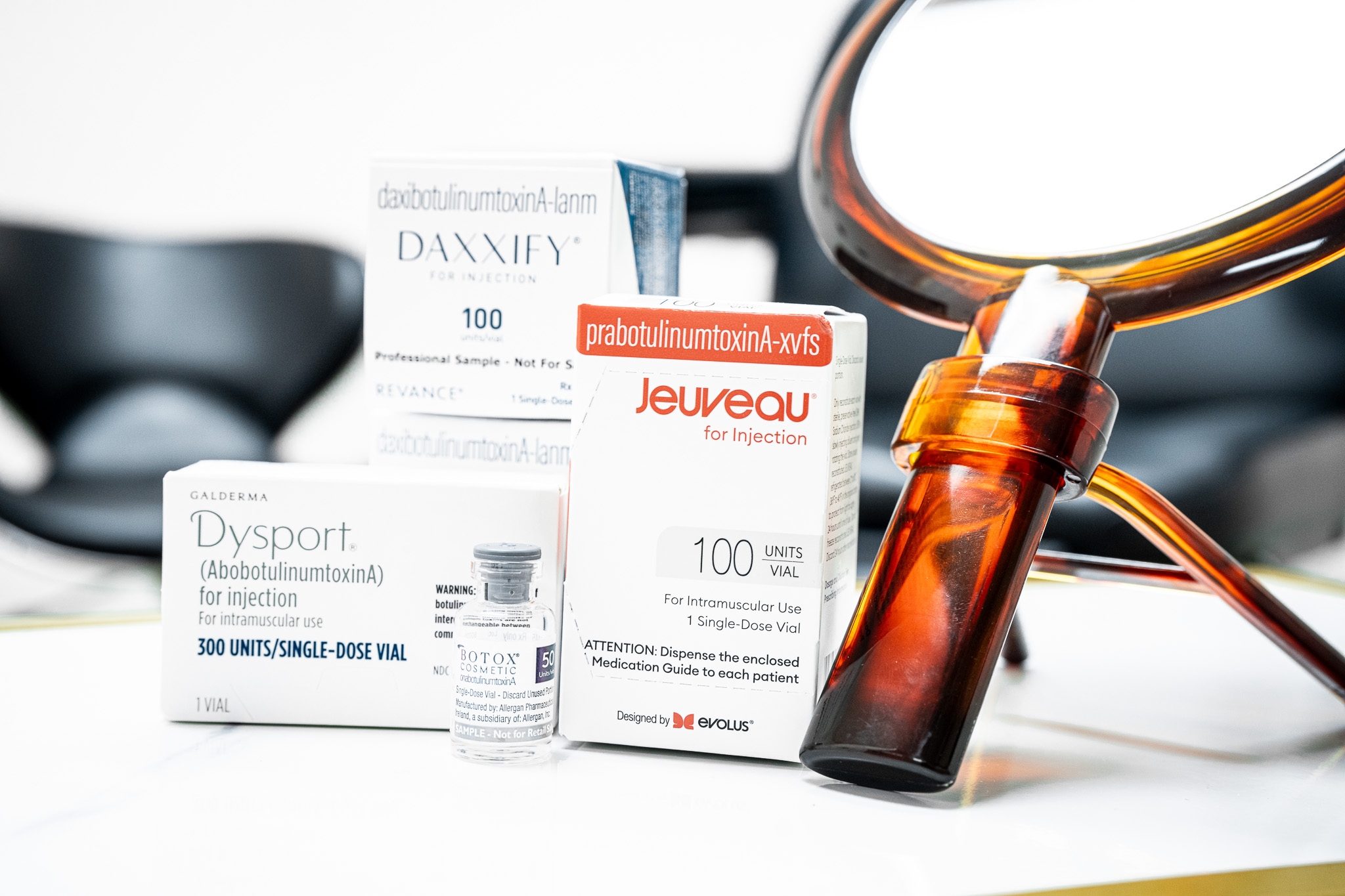Neurotoxins
In Lodi, CA
Introduction to Neurotoxins
Neurotoxins have revolutionized the approach to non-surgical aesthetic enhancements, offering a minimally invasive solution for reducing fine lines and wrinkles. These treatments provide significant aesthetic benefits, delivering smoother skin and a more youthful appearance with just a few quick injections.

What Are Neurotoxins?
Neurotoxins are injectable treatments commonly used in cosmetic medicine to temporarily relax facial muscles, thereby reducing the appearance of wrinkles. Popular brands include Botox, Dysport, Daxxify, Jeuveau, and Xeomin, each of which has specific applications and strengths.
- Botox: The most widely recognized neurotoxin, ideal for smoothing forehead lines, crow's feet, and frown lines.
- Dysport: Similar to Botox but with a quicker onset, often used for larger areas due to its spreading ability.
- Daxxify: Renowned for its potential longevity based on clinical studies, Daxxify is suggested to have a longer duration compared to other neurotoxins. Individual results may vary, providing some clients with extended benefits.
- Jeuveau: Marketed as "Newtox," Jeuveau is geared towards cosmetic enhancements with a focus on affordability.
- Xeomin: Unique in that it contains no accessory proteins, potentially reducing the risk of resistance. We do not carry this in house
Benefits of Neurotoxins
Reduced Appearance of Wrinkles
Creates a smoother, more youthful facial appearance.
Minimal Downtime
Most patients can resume daily activities immediately after treatment.
Preventative Aging Benefits
Regular use can slow the development of new wrinkles.
Quick Procedure
Treatments typically take less than 30 minutes.
Customizable Results
It can be tailored to suit each individual’s aesthetic goals.
Non-Surgical
Offers a non-invasive alternative to surgical procedures.
How Do Neurotoxins Work?
Neurotoxins work by blocking nerve signals to the muscles where they are injected. This prevents the muscles from contracting, causing wrinkles to relax and soften. This effect is temporary, lasting from three to six months, depending on the product used and individual metabolism rates.

Why Choose Uplift Live Confident Medicine for Neurotoxins
- Experienced Practitioners: Our team is skilled in the precise application of multiple neurotoxin products.
- Personalized Care: Each treatment plan is customized to meet your unique needs.
- State-of-the-Art Facilities: Modern, comfortable, and equipped with the latest technology.
- Safety First: We prioritize your health and cosmetic outcomes by adhering to the highest safety standards.
- Client Satisfaction: Committed to providing exceptional results and patient care.
Frequently Asked Questions
How long do the effects last?
Typically, results last between three to six months.
Are there any side effects?
Minor bruising and swelling may occur, but serious side effects are rare.
Can I go back to work after treatment?
Yes, there is no downtime required after neurotoxin injections.
Will my face look natural?
Absolutely, when administered properly, neurotoxins should enhance your natural beauty without looking ‘frozen’.
Is there an ideal age to start treatments?
Neurotoxins are FDA-approved for patients 18 and older, but most people begin treatments in their 30s or older.
